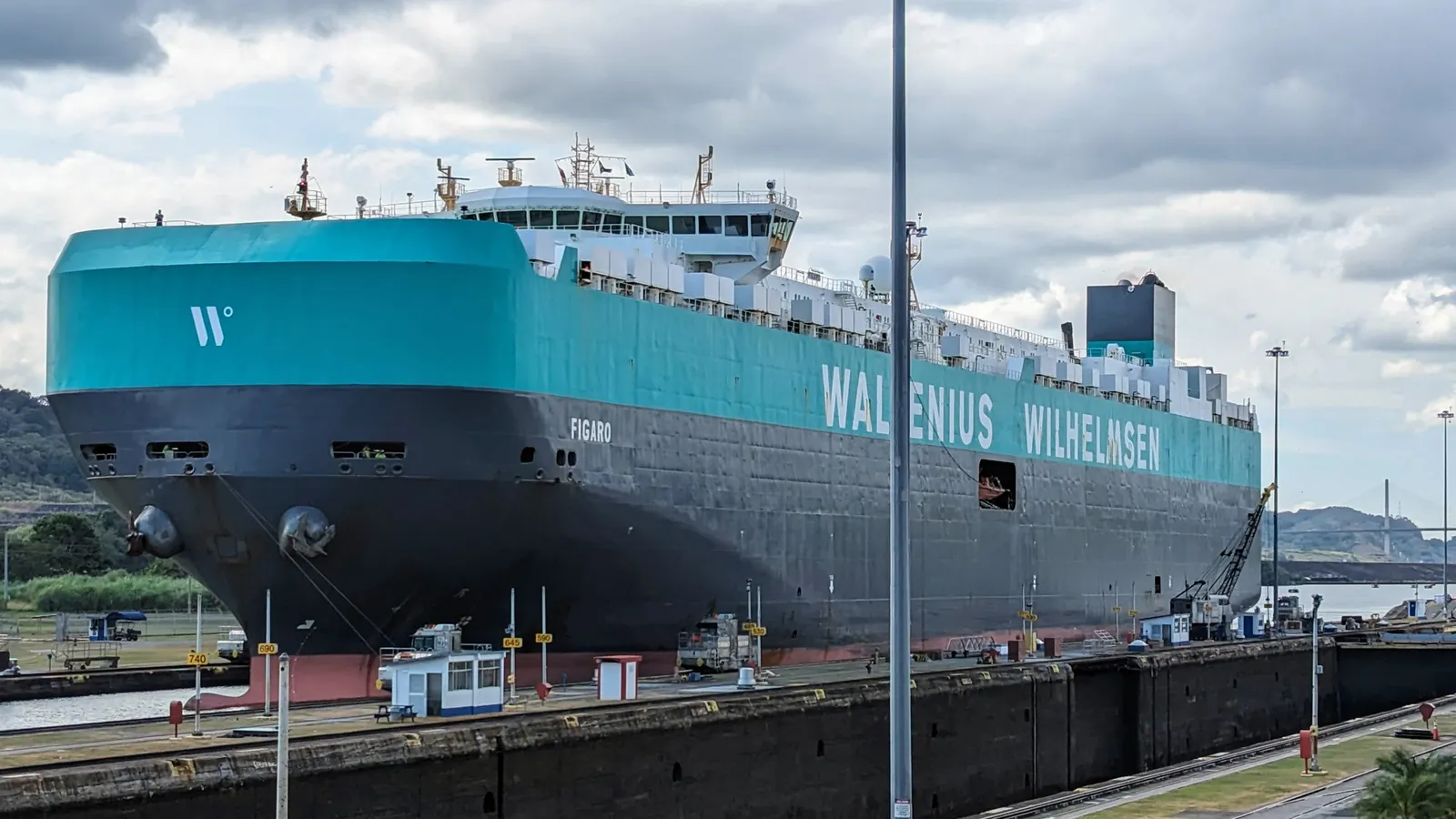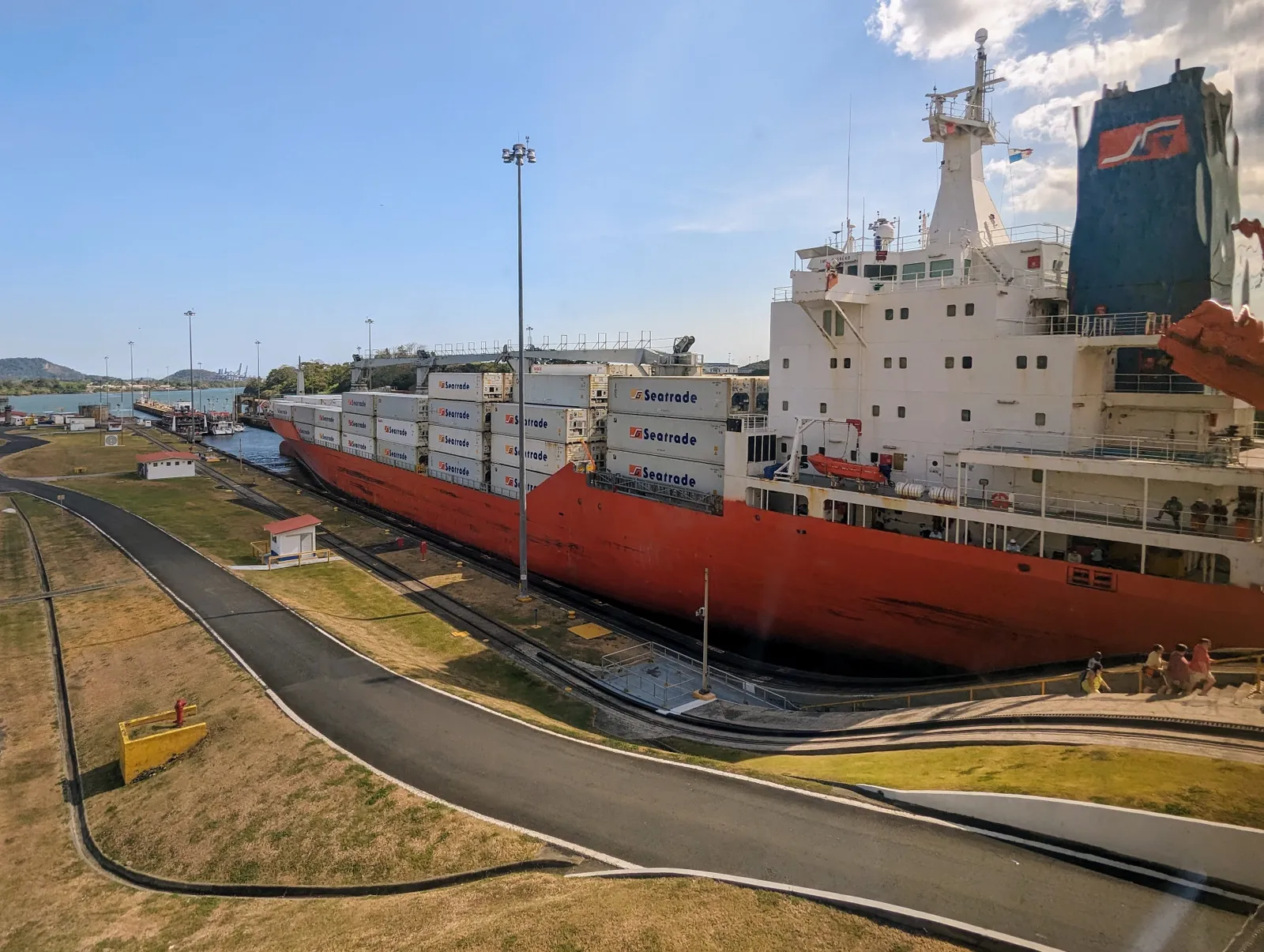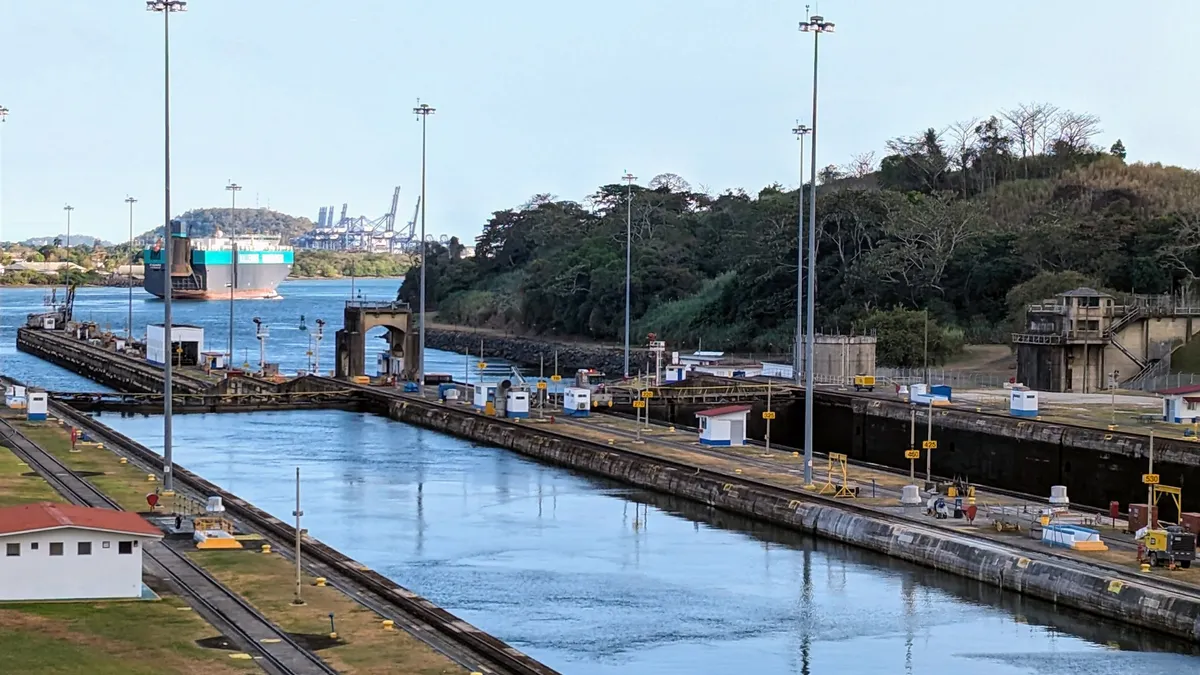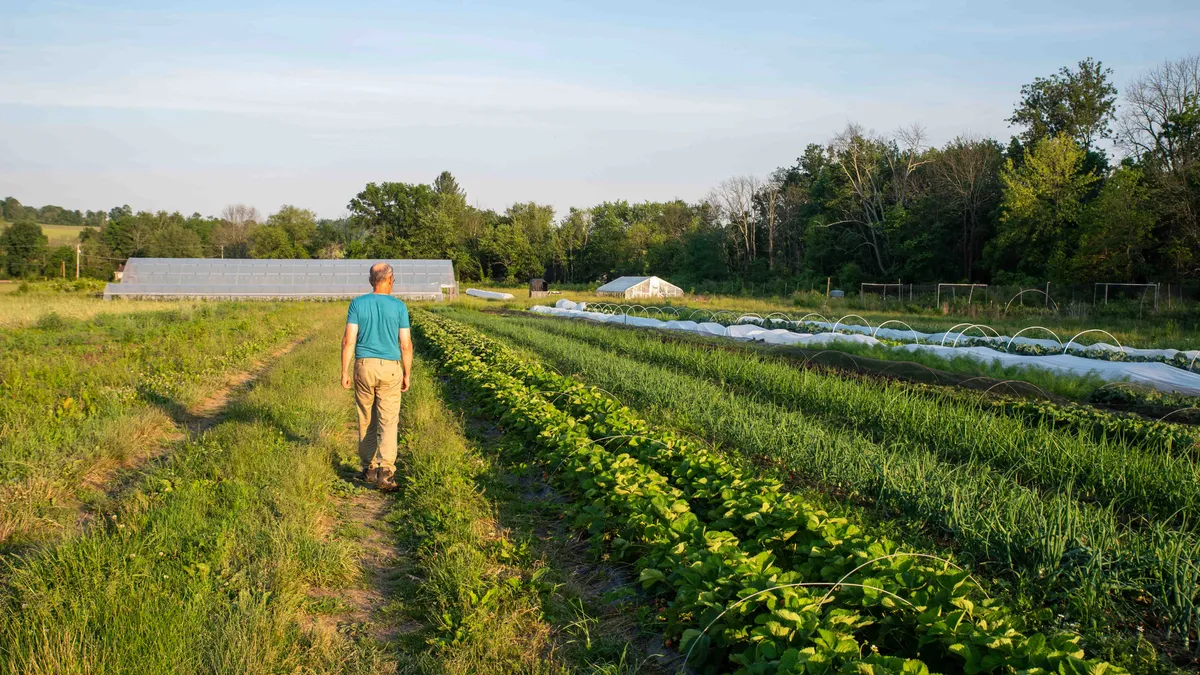Visitors to the Panama Canal’s Miraflores Locks would have little indication something is amiss. The sun glistens on the water, which appears plentiful in the locks. Ships, carrying everything from containers to petroleum, await their turn. It’s an elegant dance — gates open, tugs pull the ship, water is pumped out and away the vessel goes.
It seems as if everything is normal, but shippers know that’s far from reality. The Panama Canal recently experienced some of its worst drought conditions in history. The canal reduced daily booking slots and maximum draft, leading shippers to face decisions on where and how to transport their cargo.
But things are turning a corner.
On March 18, the canal began to offer 26 booking slots daily, revised from the previous number of 24. Starting March 25, the canal started allowing 27 slots, a spokesperson for the Panama Canal said via email.
“Our efficient water saving measures have allowed us to increase the daily number of transits, while maintaining the 44-foot draft for the rest of the dry season,” the spokesperson said.

The canal increased booking slots “based on the present and projected water level of Gatun Lake,” which feeds the canal and its locks, the spokesperson said. Last July, the lake’s level fell to 79 feet, the lowest since 2016, with experts citing El Niño and climate change for affecting the rainy season. By mid-March, the lake’s level had risen by a foot.
The canal also executed its “Operational Water Strategy,” which includes cross-filling — reusing water from one lock chamber to another.
While the canal is not yet up to its full booking slots, which averaged 36 daily pre-drought, it’s a move in the right direction, said Jenna Slagle, senior data analyst at project44.
“It’s really good to see it on the mend,” Slagle said.
Container shipping at the canal
A variety of vessel types transit the canal, said Rob Handfield, professor of supply chain management at North Carolina State University. They include bulk cargo, gas and container ships carrying automotive parts, manufacturing items and consumer products.
“Container ships were better able to handle the restrictions,” the canal spokesperson said. “The maximum draft of 44 feet serves up to 70% of containerships transiting the waterway.” The canal saw more variation in transits by bulk carriers and tankers.
Most bulk grain vessels leaving the U.S. Gulf for East Asia were rerouted from the Panama Canal to the Suez Canal — increasing their travel distance by over 5,000 nautical miles and their time by over 2 weeks, according to a report from the U.S. Department of Agriculture. However, hostilities around the Suez Canal prompted carriers to reroute again around the Cape of Good Hope.
Charles Kim, lead LPG analyst at S&P Global Commodity Insight, said some container ships and bulk carriers sought alternative routes, such as the Cape of Good Hope. That opened the gates for other types of shipments at the Panama Canal like liquefied petroleum gas which “has so far recorded 4.3 in the daily average transit count, the highest figure since October last year,” Kim said in an email.

For many shippers, the Panama Canal is still the fastest maritime route from Asia to the U.S. East Coast. In recent months, average canal transit times hovered around one to two days, according to project44 data emailed to Supply Chain Dive. In mid-March, the canal’s data showed average days in queue of about two days.
Aside from the Cape of Good Hope, another option is to redirect cargo to West Coast ports — a tactic shippers and carriers are also employing to avoid the Suez Canal and piracy issues in the Red Sea. More grain shippers began moving cargo away from Gulf ports and toward the Pacific Northwest route. Ocean freight costs on the PNW route rose 8% for corn and rose 7% for soybeans quarter-over-quarter, per the USDA.
“We need one of these canals working,” Slagle said.
Hoping for rain
Panama’s rainy season typically starts around April or May, and should replenish the Gatun Lake, providing water for the canal and Panama’s residents.
“Hopefully the skies will open and we’ll get a lot of rain,” Handfield said.
The canal said the number of daily slots will remain at 27 “until conditions warrant changes.” Kim expects the canal authority to open slots and possibly ease the maximum draft in multiple phases, although full recovery will take some time.
The question is how water levels may affect canal operations in the future. The canal is tackling the issue head on, using tandem lockage (where two ships transit simultaneously in one chamber), water-saving basins and strict control of water leaks, among other measures. Long term, it’s examining projects to improve water storage reliability at the Gatun Lake.
For shippers, it’s about staying current on the situation and baking in as much flexibility as possible.
“Make sure you have a pulse on how long each of these routes are going to take, what the costs are, and what is most important to you,” Slagle said. “Like everything in supply chain, there’s no easy solution.”
Sarah Zimmerman contributed to this story.




















